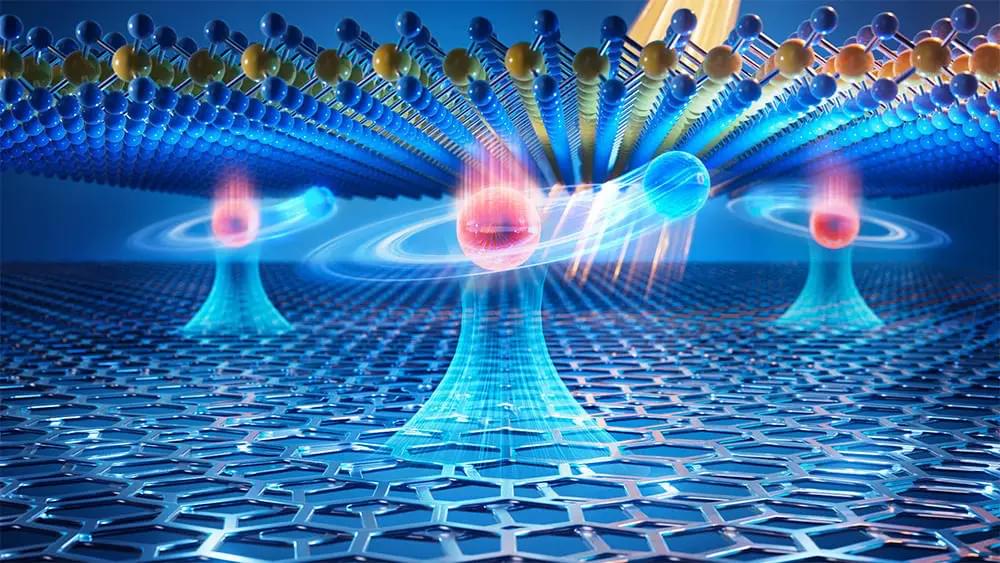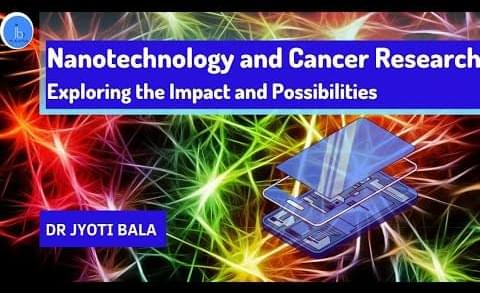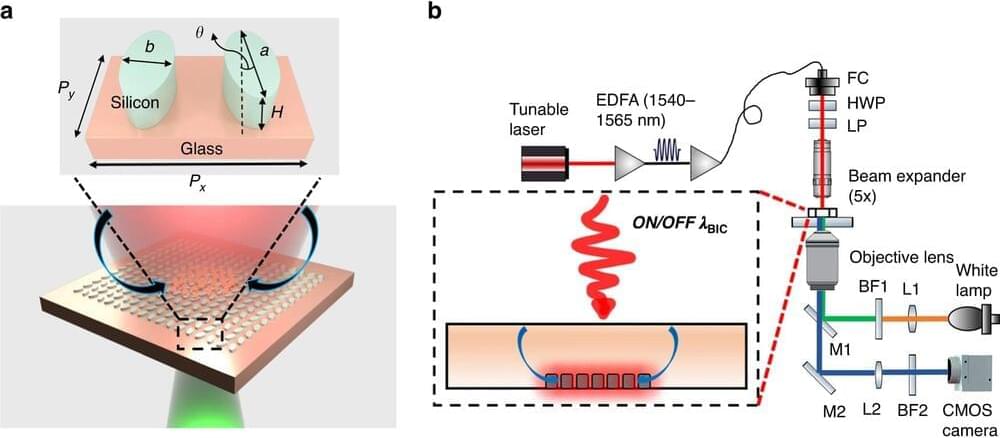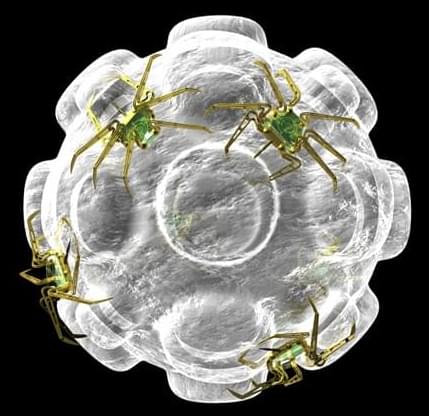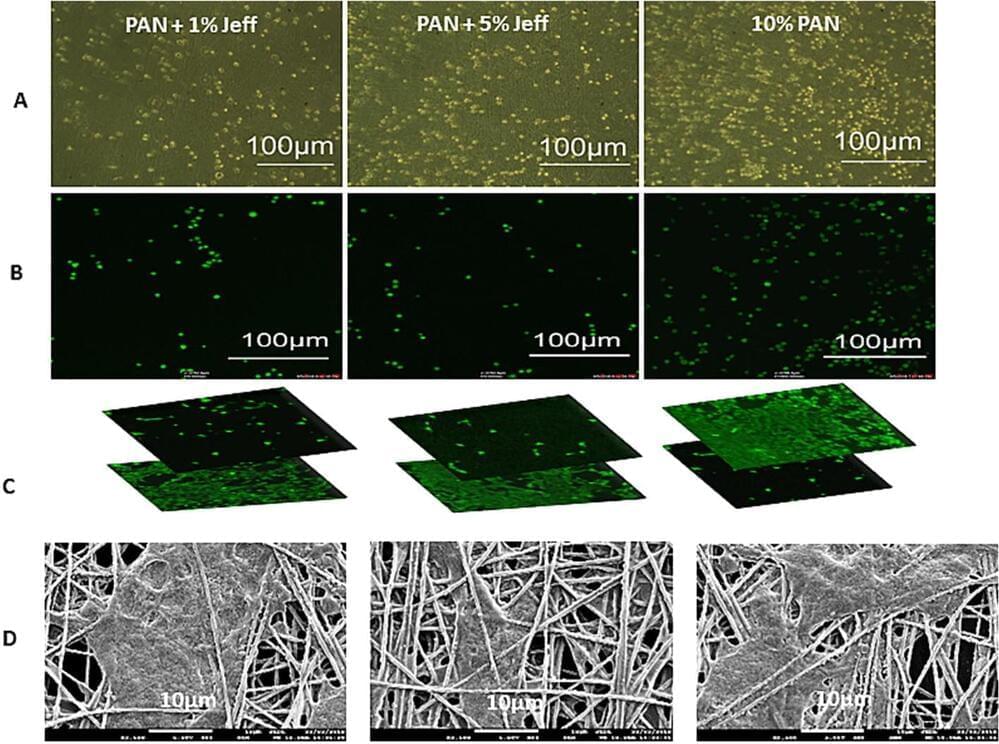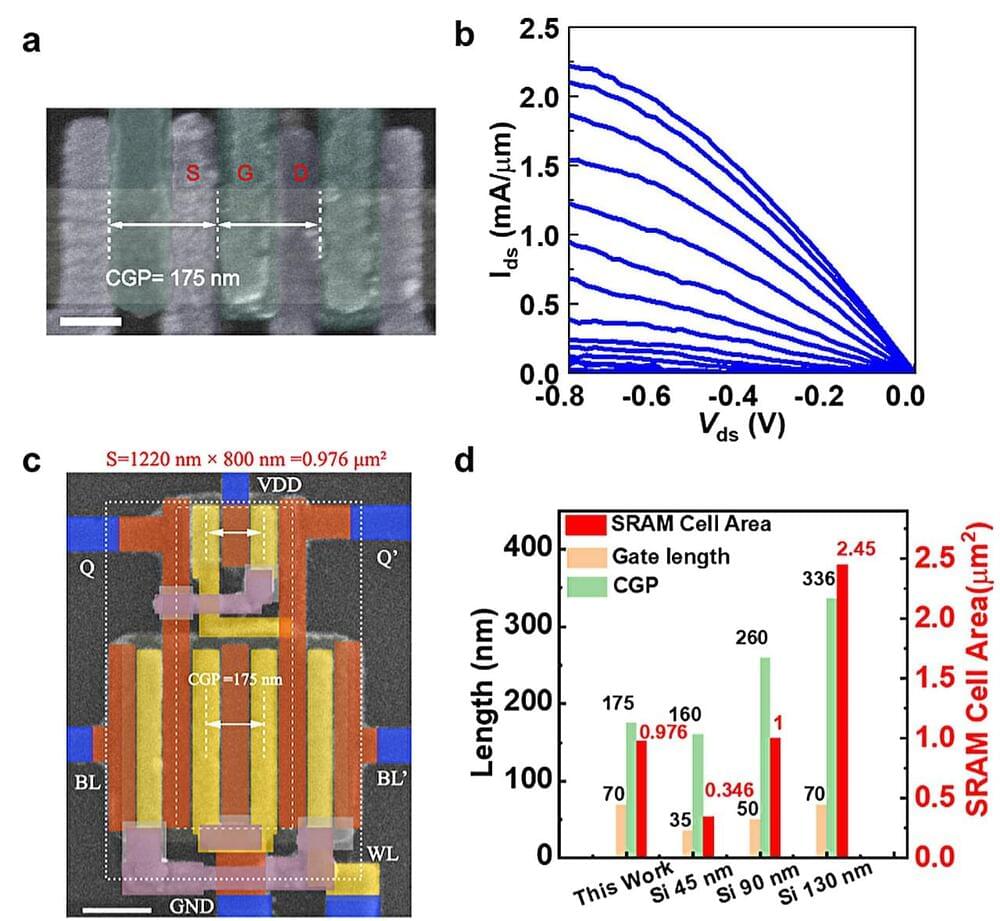Aug 1, 2023
Nanotech used to grow eye cells as a potential treatment for blindness
Posted by Dan Breeden in categories: biotech/medical, life extension, nanotechnology
Researchers have used 3D nanotechnology to successfully grow human retinal cells, opening the door to a new way of treating age-related macular degeneration, a leading cause of blindness in the developed world.
In age-related macular degeneration (AMD), the macula, the part of the retina that controls sharp, straight-ahead vision, deteriorates and causes blurring in the central field of vision.
There are two types of AMD, ‘dry’ and ‘wet.’ Dry AMD is where the RPE cells in the macula break down, causing vision loss over time. It’s the most common type and mostly affects older people. In the rarer wet AMD, abnormal blood vessel growth into the macula causes fluid and blood leakage, damaging the retina and destruction of the RPE cells, leading to a rapid loss of vision.

